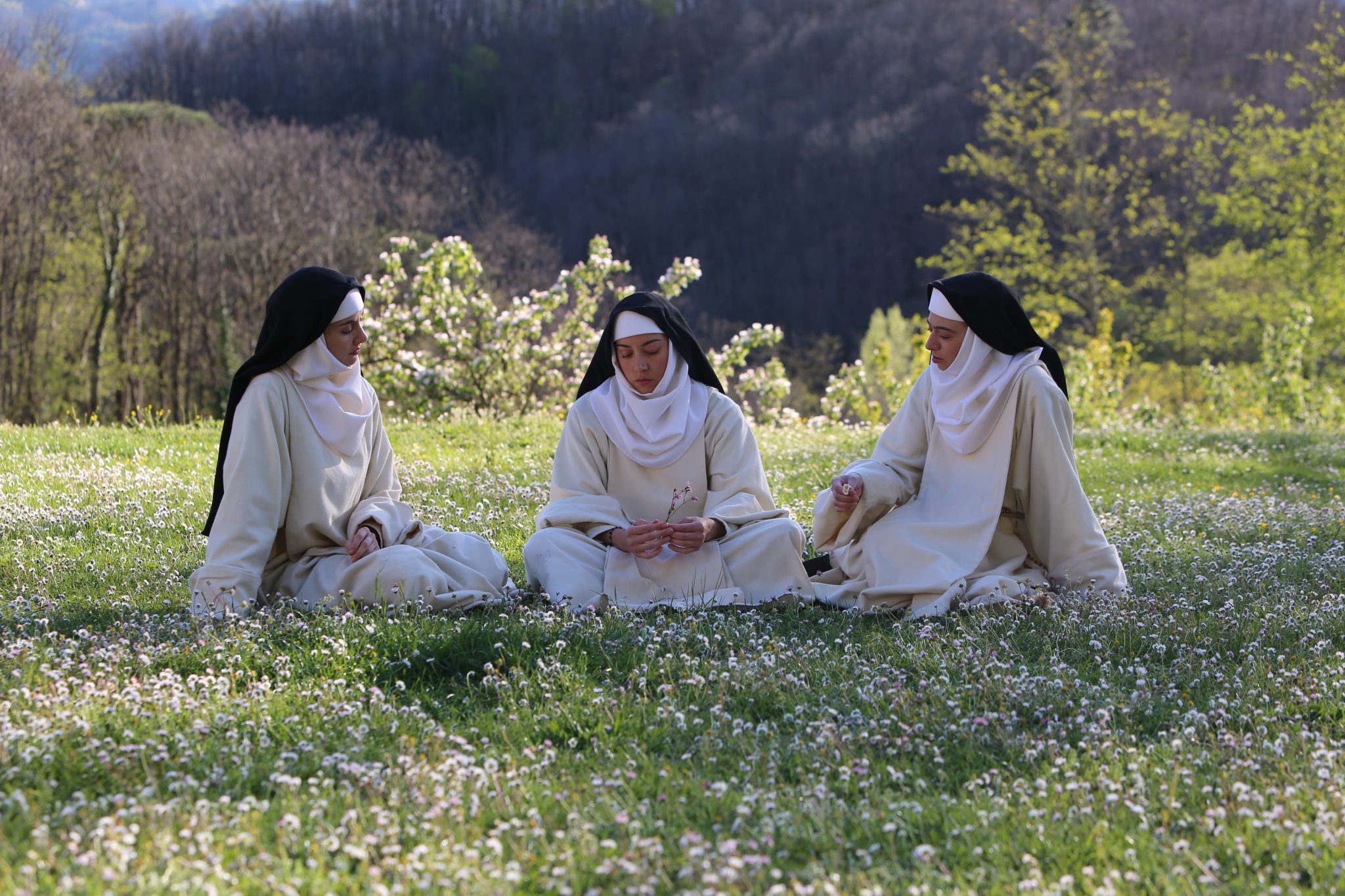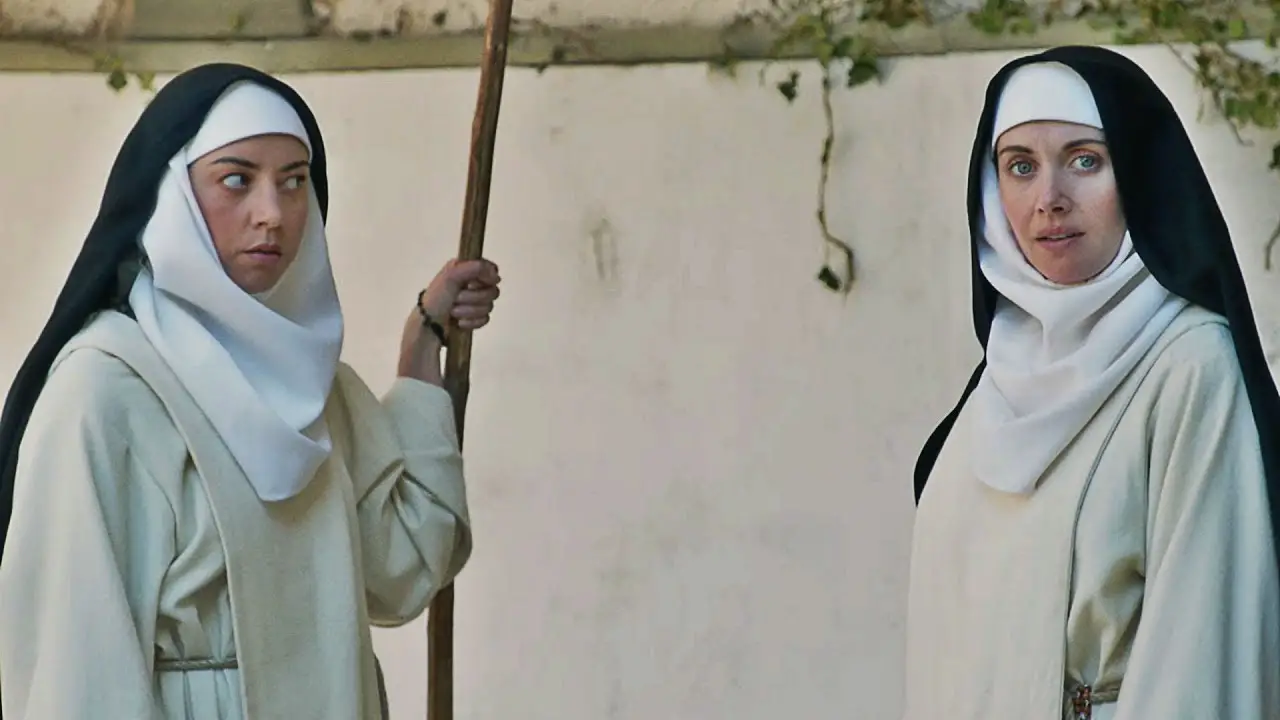Inspired by Giovanni Boccaccio’s “The Decameron” (1349-1353), “The Little Hours” offers a lewd comedic style with a distinct irreverence toward contemporary storytelling. Along with “The Decameron,” critics argue that “Monty Python and the Holy Grail” (1975) could be an additional source of inspiration for director Jeff Baena.
The comparison of the two works, however, neglects to understand the diverse range of genres found in medieval literature.
“Grail,” in some ways, borrows tropes from the medieval romance genre while “Little Hours” makes a frame within a frame of its crude source material.
The film in question is set during the mid-1300s. Somewhere in the Italian countryside, a convent of nuns harass their groundskeeper. They claim he leers at them, and they throw horrible insults his way. The groundskeeper leaves the convent, and Father Tommaso (John C. Riley) is left with only the Sisters to tend the crops.
One afternoon, Father Tommaso sets out to sell some embroideries made by the convent. On his drunken journey, Tommaso drops the embroideries in a river. At this point, he meets Massetto, a lowly servant who has slept with his master’s wife and is now on the run.
Tommaso agrees to have Massetto stay at the convent if he agrees to act as a deaf-mute. If Massetto feigns the disabilities, Tommaso can ensure that the young man won’t bother the nuns. Naturally, nothing good comes of the arrangement until the final moments of the film.
The comedy from the movie derives from the bizarre situations that occur when such coincidences happen. Its comedic success does not need an explanation, though it is important to keep in mind that the dialogue is improvised.
Without taking apart and destroying any of the comedic value of this movie, critics might say that its humor involves sexual misconduct and a discrepancy towards social norms.
The dissection of this film’s comedy, or any comedy at all, would do it an injustice. In general terms, each of the actors plays off each other naturally, and while scenes move slowly, there are multiple stories happening at once.
The loose structure of Baena’s frame allows for the individual stories of all the characters to interconnect with one another. While the content of “The Little Hours” takes inspiration from only a small portion of its source material, its structural style takes from it and other frame narratives.
The main source material of “The Little Hours,” which is Bocaccio’s “Decameron,” covers a wide range of subjects within the overall frame of the book. The setting of the frame narrative takes place in the 14th century while the plague infests Florence. 10 wealthy Florentines, seven women and three men, escape to a villa near Fiesole.
The 10 of them decide to tell a story every day for the next 10 days, making a hundred stories in total. Each day passes with new themes coming along due to certain criteria, given by one of the travelers, for any particular day.
The frame within “The Decameron” that Baena chooses to adapt to film is Day Three of the overall frame narrative. Each story bears consistent themes of trickery, deceit and infidelity, which drive both the dramatic action and comedic style of the pieces. Baena recognized these thematic similarities, but his frame within a frame sometimes starts to fall apart.
One example of where “The Little Hours” deviates from its source material is during a strange scene between Sister Fernanda, Marta and Massetto. This scene is pertinent to understanding who these characters are and what they want.
The two women in the film hold a knife to Massetto’s neck after putting belladonna in Fernanda’s eyes and rubbing a drop of blood on each of her cheeks. The nun and her friend both sexually assault Massetto in their efforts to try and woo him.

In the medieval age and at least up until the early Renaissance, one could find recipes for love potions and spells. The inclusion of this scene to introduce the pagan elements of the story does its job; however, in Day Three Story One of “The Decameron,” Massetto initially agrees to sleep with all the nuns at the convent.
Only after he starts sleeping in on his day job does he put an end to the affair. This deviation from Massetto’s original story is more than likely a way to put an offbeat, irreverent skew on the motivations of the supporting cast.
In time, the idea of nuns wishing to have a little fun isn’t quite as comedically satisfying as it was in the medieval ages of Europe. In order to bring a more modern grit to the storyline, Baena certainly adds a new layer to Boccaccio’s work.
Is the layer justified? Well, when adapting something that’s 600-years-old, some things have to be changed. The changes in made in “Little Hours,” as stated before, can help bring this centuries-old story to life in both perplexing and unsettling ways.
The edgy approach to adapt a few old stories helps “Little Hours” accomplish most of what it seeks to do. However, over time, some cultural norms just aren’t quite as fun to poke at anymore. In some ways, “Little Hours” artificially heightens the tension of its source material and gives the comedy a farcical and coincidental quality.
The film asks the viewer to let go of any and all expectations that they might have in relation to realistic fiction.
Without a doubt, medieval literature does not operate under the same rules that modern literature does. Both in content and style, the stories that both the feudal aristocrats and common folk enjoyed simply could not fly today. After all, morality played a huge role in these old stories and, in time, popular media has moved in an amoral direction.
Of course, there are plenty of stories from the mid to late medieval ages that stand the test of time, but due to their adherently didactic and often allegorical nature, these 14th century tales are foreign to modern sensibilities.
“Little Hours,” for the most part, accomplishes the goal of modernizing a few of Boccaccio’s stories. The comedy and drama raised by the situations at hand stands in stark contrast to most comedies.
Rather than quick punchlines and snappy dialogue, the humor from “The Little Hours” comes through a slow burn and the discreet revelations of wrinkles in the atypical scenarios taking place. The indifference toward the modern style of Hollywood comedy could intrigue some viewers who’ve had enough of the status quo.
If rowdy nuns, secret covens and farcical conditions peak any interests, then the movie offers curious viewers something off the beaten path of modern stories.

















